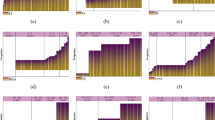Abstract
Alkali-silica reaction (ASR) can induce the damage and loss in serviceability of concrete structures. Many studies have been conducted to investigate the influence of ASR on the degradation of mechanical properties of the concrete. Their results show that compared with other mechanical properties, the modulus of elasticity is the most affected by ASR, where the reduction is up to roughly 70% compared to its properties without expansion. In this study, to effectively assess the reduction of the modulus of elasticity caused by ASR, a novel predictive model is proposed based on support vector machine (SVM), in which the mix proportion of concrete, exposure environment and corresponding expansion are employed as the inputs and the output is the modulus of elasticity degradation. To improve the generalization capacity of the proposed predictive model, three different optimization algorithms are adopted to select optimal model parameters. Finally, the experimental data from the existing literatures are used to test the performance of the proposed method with satisfactory results.
Access this chapter
Tax calculation will be finalised at checkout
Purchases are for personal use only
Similar content being viewed by others
References
Ahmed T, Burley E, Rigden S, Abu-Tair AI (2003) The effect of alkali reactivity on the mechanical properties of concrete. Constr Build Mater 17(2):123–144
Esposito R, Anaç C, Hendriks MA, Çopuroğlu O (2016) Influence of the alkali-silica reaction on the mechanical degradation of concrete. J Mater Civ Eng 28(6):04016007
Gautam BP, Panesar DK, Sheikh SA, Vecchio FJ (2017) Effect of coarse aggregate grading on the ASR expansion and damage of concrete. Cem Concr Res 95:75–83
Giaccio G, Zerbino R, Ponce J, Batic OR (2008) Mechanical behavior of concretes damaged by alkali-silica reaction. Cem Concr Res 38(7):993–1004
Helene P, Carvalho M, Pacheco J (2017) Engineering field tests for alkali-aggregate reaction. Struct Concr 18(2):349–355
ISE (1992) Structural effects of alkali-aggregate reaction: technical guidance on the appraisal of existing structures
Kawabata Y, Seignol J-F, Martin R-P, Toutlemonde F (2017) Macroscopic chemo-mechanical modeling of alkali-silica reaction of concrete under stresses. Constr Build Mater 137:234–245
Kubo Y, Nakata M (2012) Effect of reactive aggregate on mechanical properties of concrete affected by alkali–silica reaction. In: 14th international conference on alkali–aggregate reaction. Texas, USA
Larive C (1997) Apports combinés de l’expérimentation et de la modélisation à la compréhension de l’alcali-réaction et de ses effets mécaniques, Ecole nationale des ponts et chaussees
Mohammed TU, Hamada H, Yamaji T (2003) Relation between strain on surface and strain over embedded steel bars in ASR affected concrete members. J Adv Concr Technol 1(1):76–88
Multon S (2003) Evaluation expérimentale et théorique des effets mécaniques de l’alcali-réaction sur des structures modèles’, Marne-la-Vallée
Pleau R, Bérubé M, Pigeon M, Fournier B, Raphaël S (1989) Mechanical behaviour of concrete affected by ASR. In: Proceedings of 8th international conference on alkali-aggregate reaction, Society of Mat. Sci., Kyoto, Japan, pp 721–726
Sanchez L (2014) Contribution to the assessment of damage in aging concrete infrastructures affected by alkali-aggregate reaction, Citeseer
Sanchez LFM, Fournier B, Jolin M, Mitchell D, Bastien J (2017) Overall assessment of alkali-aggregate reaction (AAR) in concretes presenting different strengths and incorporating a wide range of reactive aggregate types and natures. Cem Concr Res 93:17–31
Sargolzahi M, Kodjo SA, Rivard P, Rhazi J (2010) Effectiveness of nondestructive testing for the evaluation of alkali–silica reaction in concrete. Constr Build Mater 24(8):1398–1403
Smaoui N, Bissonnette B, Bérubé M-A, Fournier B, Durand B (2005) Mechanical properties of ASR- affected concrete containing fine or coarse reactive aggregates. ASTM International 3(3):1–16
Yu Y, Li Y, Li J (2015) Forecasting hysteresis behaviours of magnetorheological elastomer base isolator utilizing a hybrid model based on support vector regression and improved particle swarm optimization. Smart Mater Struct 24(3):035025
Yu Y, Li Y, Li J, Gu X (2016) A novel optimised self-learning method for compressive strength prediction of high performance concrete. Neurocomputing 211:41–52
Yu Y, Li W, Li J, Nguyen T (2018) A novel optimised self-learning method for compressive strength prediction of high performance concrete. Constr Build Mater 184:229–247
Acknowledgements
This work was supported by the Australian Research Council Research Hub (IH150100006) for Nanoscience Based Construction Materials Manufacturing (NANOCOMM) and the industry partner Roads and Maritime Services (RMS).
Author information
Authors and Affiliations
Corresponding authors
Editor information
Editors and Affiliations
Rights and permissions
Copyright information
© 2020 Springer Nature Singapore Pte Ltd.
About this paper
Cite this paper
Nguyen, T.N., Yu, Y., Li, J., Sirivivatnanon, V. (2020). An Optimised Support Vector Machine Model for Elastic Modulus Prediction of Concrete Subject to Alkali Silica Reaction. In: Wang, C., Ho, J., Kitipornchai, S. (eds) ACMSM25. Lecture Notes in Civil Engineering, vol 37. Springer, Singapore. https://doi.org/10.1007/978-981-13-7603-0_85
Download citation
DOI: https://doi.org/10.1007/978-981-13-7603-0_85
Published:
Publisher Name: Springer, Singapore
Print ISBN: 978-981-13-7602-3
Online ISBN: 978-981-13-7603-0
eBook Packages: EngineeringEngineering (R0)




